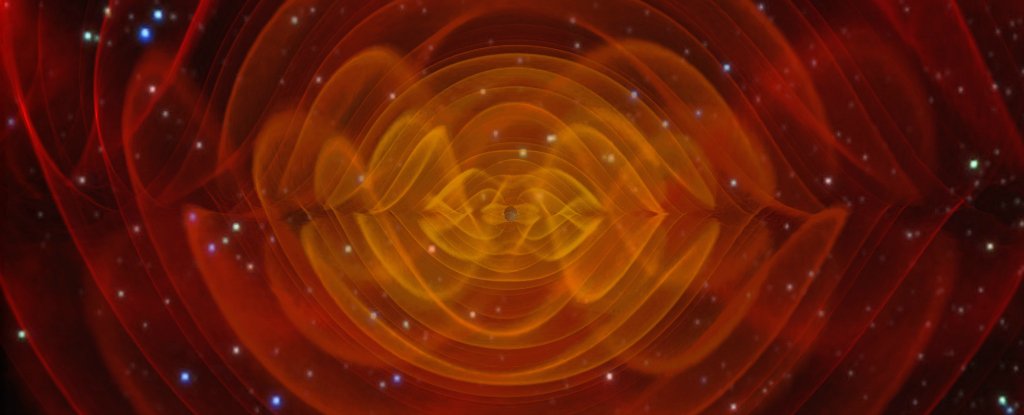Scientists made history by detecting gravitational waves for the second time this week, after picking up the tiny vibrations rippling out through space from a black hole collision 1.4 billion years ago.
But as if that's not awesome enough, physicists now think we might have accidentally found something equally huge at the same time... dark matter.
Dark matter is estimated to make up around 26 percent of the mass and energy in the observable universe. But although we can detect the gravitational force this mysterious type of matter is exerting, it doesn't seem to put out any form of light or radiation that we can pick up - hence the 'dark'.
But have we just detected evidence of it for the first time? After analysing the gravitational wave signals picked up by the Laser Interferometer Gravitational Wave Observatory (LIGO) back on 26 December 2015 - and announced to the public this week - a team of researchers from the US have put forward the hypothesis that this pair of black holes - or binary black holes - might actually be dark matter.
That idea might sound a little out there, but they're not the first to put forward this suggestion. Just last month, a NASA scientist published a paper suggesting that primordial black holes - the black holes that appeared within a fraction of a second of the birth of the Universe - might actually be the 'dark matter' we can sense but not see in the Universe around us.
To put that into context, for decades, scientists have assumed that dark matter must be some kind of mysterious high-mass particle or axions that we can feel but not see, hidden within the Universe.
But we've gotten a lot better at detecting mysterious particles in recent years, particularly thanks to advances with the Large Hadron Collider, and yet experiment after experiment has turned up no sign of these hypothetical dark matter particles.
Instead, scientists are now beginning to look back to the uneven distribution of mass in the early Universe - which was always assumed to be a result of dark matter particles - and consider the possibility that it might have been caused by primordial black holes.
So far, the research suggests that primordial black holes could fit quite well as dark matter. But what does LIGO have to do with all of this?
Well, the mass of a black hole is measured in terms of multiples of our Sun, and from the gravitational waves detected, researchers have calculated that the two black holes that merged were 36 and 29 solar masses.
That's big - so big in fact that it doesn't fit our understanding of regular stellar black holes, which form when stars collapse. But they're also not big enough to fit predictions for the size of supermassive black holes at the centre of galaxies.
They do match the expectations of primordial black holes, though, which has led researchers to consider the possibility that those early black holes are what LIGO detected smashing into one another. And, interestingly, the black holes measured also match the mass predictions for dark matter - providing very tentative evidence that primordial black holes could be dark matter candidates.
Primordial black holes are different to stellar black holes, not just because of their age, but because they formed from the collapse of large gas patches during the birth of the Universe. Their existence has never actually been confirmed, but from everything we know, they could explain the effects of what we think of as dark matter.
The Johns Hopkins team took things one step further and have now calculated - based on their size and shape - how often these primordial black holes would form binary pairs, and eventually collide. And their results suggest it's likely that what LIGO picked up was indeed a primordial black hole merger.
It's still way too say that primordial black holes are dark matter, but the evidence is slowly mounting, and future gravitational wave observations will be crucial to finding out more.
We're remaining skeptical for now, seeing as scientists have already had one dark matter 'false alarm' this year, which was quickly debunked - and we seem to be a lot better at eliminating dark matter candidates than we are at substantiating them. But this is definitely a hypothesis we'll be following closely in the months to come.

Comments
Post a Comment